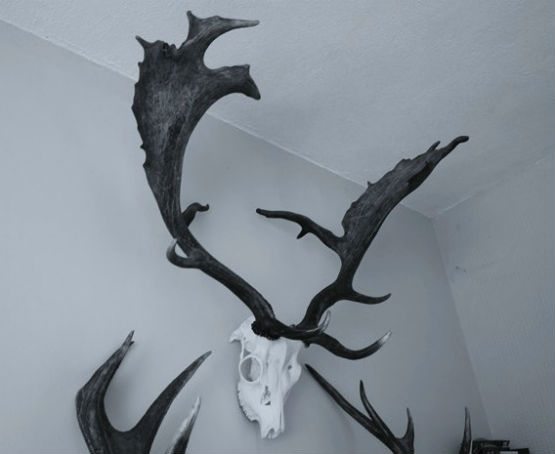In the first of a series of articles Matthew Rogers recounts his journey from becoming a recreational stalker to a more dedicated 'Trophy Hunter'.

(Above: Pic' courtesy of Shaves Green)
The previous few years have heralded some great stalks across the south of England and a mixture of heads taken; some fine, some representative, some weak. My personal ration of bucks to does weighted slightly towards the latter. This was partly a conscious decision to build trigger time and a cull portfolio competently performed before turning my attentions to the relative values of one animal against another.
Season after season rolled past, delivering some excellent sport. Few opportunities were missed (either literally or figuratively) and each season seemed to bring with it a unique character, both in the UK countryside and the animals that make it their homes.
 There have been a few surprises along the way, of which helped to ascend my sights to the prospect of trophies and away from the cull animals I had been accustomed to taking. Two fallow bucks, weighty and sporting acceptable-to-good antlers, first sparked my interest. While clearly wild creatures and reliant on the land for their nutrition, their size and stature towered over the ‘button bucks’ and prickets that made up most of my portfolio. The price was also higher – but then so was the satisfaction. Walking around in the woodland while the gralloch was being performed, it occurred to me that this was by far the most enjoyable experience I had while shooting, any quarry or any calibre of weapon.
There have been a few surprises along the way, of which helped to ascend my sights to the prospect of trophies and away from the cull animals I had been accustomed to taking. Two fallow bucks, weighty and sporting acceptable-to-good antlers, first sparked my interest. While clearly wild creatures and reliant on the land for their nutrition, their size and stature towered over the ‘button bucks’ and prickets that made up most of my portfolio. The price was also higher – but then so was the satisfaction. Walking around in the woodland while the gralloch was being performed, it occurred to me that this was by far the most enjoyable experience I had while shooting, any quarry or any calibre of weapon.
(Left: The largest Roe Buck Trophy measured in 2012 was this monster measuring 220 CIC points)
Reflecting on this, I decided to opt out of much of the sport in the Roe Rut of 2014, choosing instead to bide my time (and my wallet) for a trophy worthy animal in the Fallow and Sika Rut of 2014, which is of course later in the year around October to early November.
The next consideration, or choice, to be made was how to approach this objective. Contrary to the initial assumption that will spring to mind, there are actually options for approaching a trophy animal, at least in the UK. The principle choice you will have to make is to seek to hunt wild, or a park animal. The specifics of my choice and my decision are evaluated in my next article, but for now I will continue to frame my motivations. The prospect of a magnificent and captivating beast, represented as found in the wild, upon my wall, became the pursuit of my stalking for most of 2014. Predictably, I only have so much wall space that can be devoted to heads, so it was important to get a good one. As a newly born trophy hunter, you would do well to visualize the physical space on the wall you have earmarked, and visualize the beast that will hang there. Picture the animal in your ‘mind’s eye’ and form an impression of how it should look. That is what you should pursue in trophy hunting, that is your goal, and ultimately why you do it.
My quest for a trophy in 2014 took many twists and turns, but this is a thought I will return to again – the visualization of the buck or stag on the wall. It will help you make your decisions, guide your choices and indeed drive which animal makes you migrate from binoculars and across to rifle scope. Clearly in trophy hunting we are looking at a serious investment of cash – while accessible, you will want to get it right, both in the shot and on the wall. It’s your money and your wall, and the beast will forever be looking down at you with its glass eyes, and I would want the eyes to be that of a proud beast that could not be bettered rather than an inferior creature sniggering at an opportunity badly invested.
As my regular ‘outfitter’ for stalking, I utilized County Deer Stalking to succeed in my quest for a trophy buck, and my upcoming articles will recount my success.
For more information about Trophy Hunting with County Deer Stalking vivit our outings page: outings-uk



















